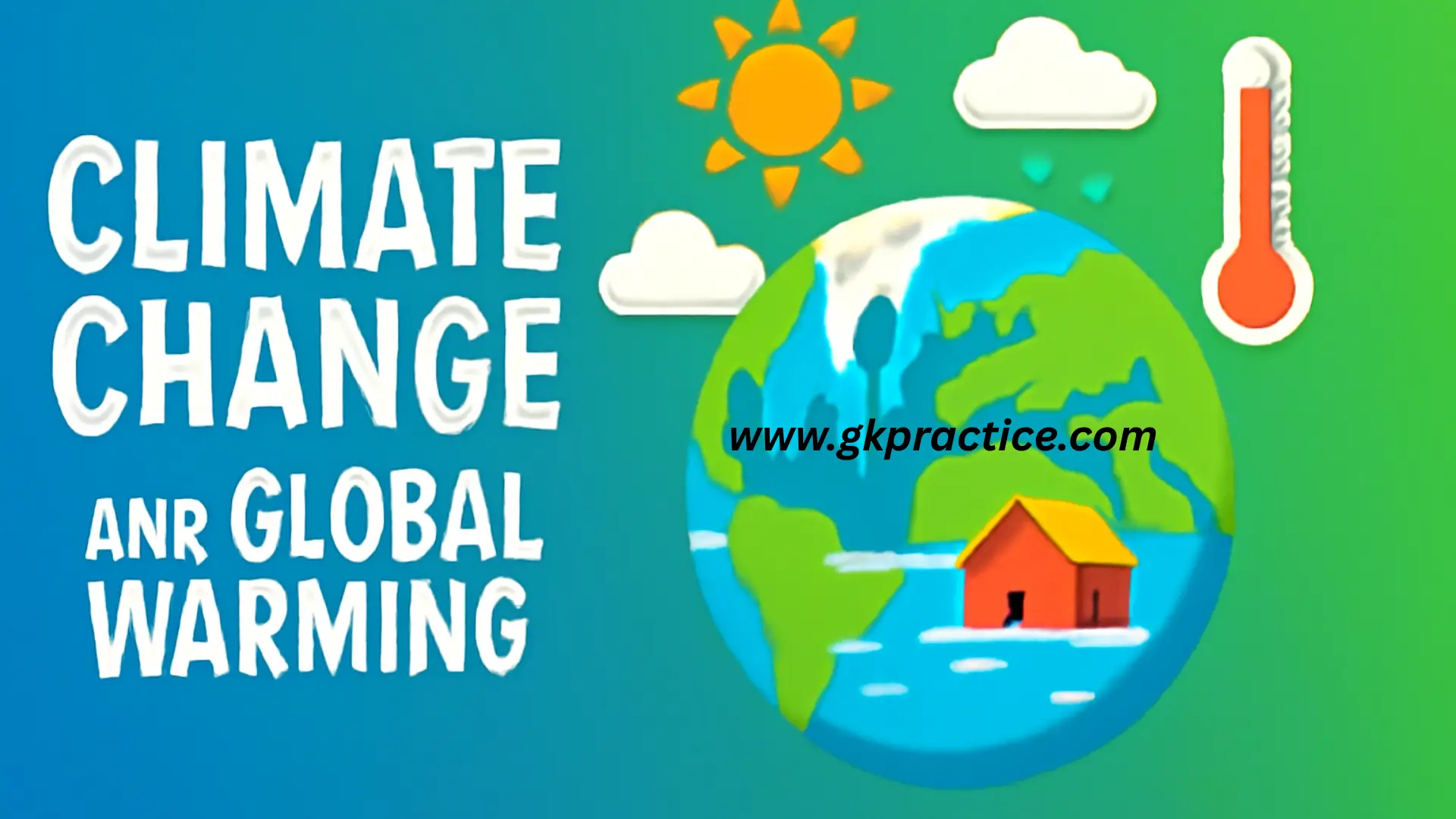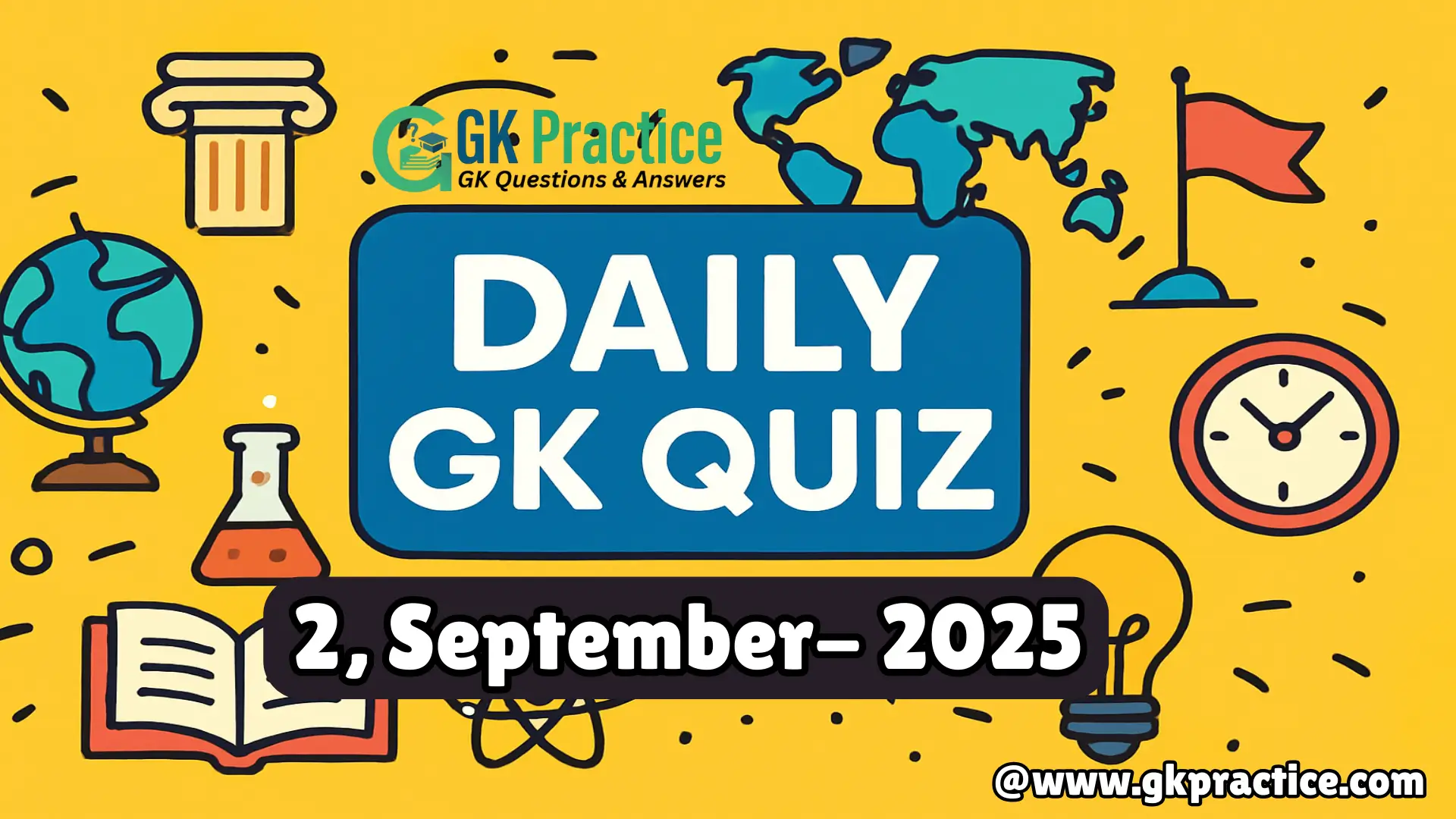11. Which human activity increases methane emissions the most?
A. Rice cultivationB. Livestock farming
C. Coal mining
D. Deforestation
Explanation: Livestock farming, especially cattle and sheep, produces methane through enteric fermentation and manure management. Methane is a potent greenhouse gas with a higher global warming potential than CO₂ over a short time, significantly contributing to climate change.
12. Which of the following is a consequence of global warming?
A. Decreased sea levelsB. Increased frequency of heatwaves
C. Growth of polar ice
D. Reduced droughts
Explanation: Global warming raises average temperatures worldwide, leading to more frequent and intense heatwaves. These extreme temperature events can cause health issues, wildfires, crop failures, and stress on ecosystems and urban infrastructure.
13. Which energy source is considered renewable and reduces greenhouse gas emissions?
A. CoalB. Oil
C. Solar power
D. Natural gas
Explanation: Solar power is a renewable energy source that generates electricity without emitting greenhouse gases. Using solar energy reduces dependence on fossil fuels, mitigating global warming, and promoting sustainable development and cleaner air quality.
14. What role do oceans play in climate change?
A. Absorb CO₂ and regulate temperatureB. Increase methane emissions
C. Reduce rainfall globally
D. Decrease greenhouse gas effects
Explanation: Oceans act as a carbon sink, absorbing large amounts of CO₂ from the atmosphere and helping regulate global temperatures. However, excessive CO₂ leads to ocean acidification, disrupting marine ecosystems and affecting biodiversity.
15. Which sector contributes the least to global greenhouse gas emissions?
A. TransportationB. Agriculture
C. Forestry
D. Tourism
Explanation: Compared to energy, transport, agriculture, and forestry sectors, tourism contributes less directly to greenhouse gas emissions. Although tourism-related transport has some impact, it is smaller compared to industrial and agricultural emissions that drive global warming.
16. Which international body monitors climate change and provides scientific reports?
A. WHOB. IPCC
C. UNESCO
D. UNDP
Explanation: The Intergovernmental Panel on Climate Change (IPCC) assesses scientific data on climate change, its impacts, and strategies to mitigate it. It provides evidence-based reports to guide governments and organizations in policy-making and climate action.
17. What is “carbon footprint”?
A. Amount of water consumedB. Total greenhouse gases emitted by activities
C. Area of forest cleared
D. Pollution of rivers
Explanation: Carbon footprint refers to the total amount of greenhouse gases, especially CO₂, released into the atmosphere by human activities like transportation, energy use, and consumption. Reducing it helps mitigate global warming and supports sustainable living.
18. How does global warming affect agriculture?
A. Increases crop yield everywhereB. Reduces rainfall uniformly
C. Causes droughts, floods, and crop stress
D. Makes soil infertile only
Explanation: Global warming disrupts weather patterns, causing unpredictable rainfall, droughts, and floods. These events negatively impact crop productivity, soil fertility, and food security, especially in vulnerable regions dependent on stable climatic conditions for agriculture.
19. Which human action can significantly reduce CO₂ emissions?
A. Using electric vehiclesB. Cutting more forests
C. Burning more coal
D. Increasing livestock
Explanation: Electric vehicles reduce reliance on fossil fuels for transportation, thereby cutting CO₂ emissions. Widespread adoption of clean energy vehicles is an effective step in mitigating global warming and reducing air pollution in urban areas.
20. What is “global warming”?
A. Sudden cooling of the EarthB. Gradual increase in Earth’s average temperature
C. Increase in volcanic eruptions
D. Earth’s orbit changes
Explanation: Global warming refers to the long-term rise in Earth’s average surface temperature due to human activities, especially greenhouse gas emissions. This increase leads to melting glaciers, rising sea levels, extreme weather, and disruptions to ecosystems and human societies.
Addressing climate change and global warming is crucial for the future of our planet. By understanding the causes and impacts, and adopting sustainable practices, we can contribute to a healthier environment and protect our ecosystems for generations to come.
* For more GK Questions and Exam Preparation Content, follow and subscribe to our YouTube Channel :GK Practice- Subscribe Now







